In my opinion, Guimarães is the most beautiful city in the district of Braga and definitely one of the incredible cities near Porto.
With its restored houses, a beautiful historical center and a lot of surprising places, your visit to Guimarães is definitely mandatory if you are staying in Porto.
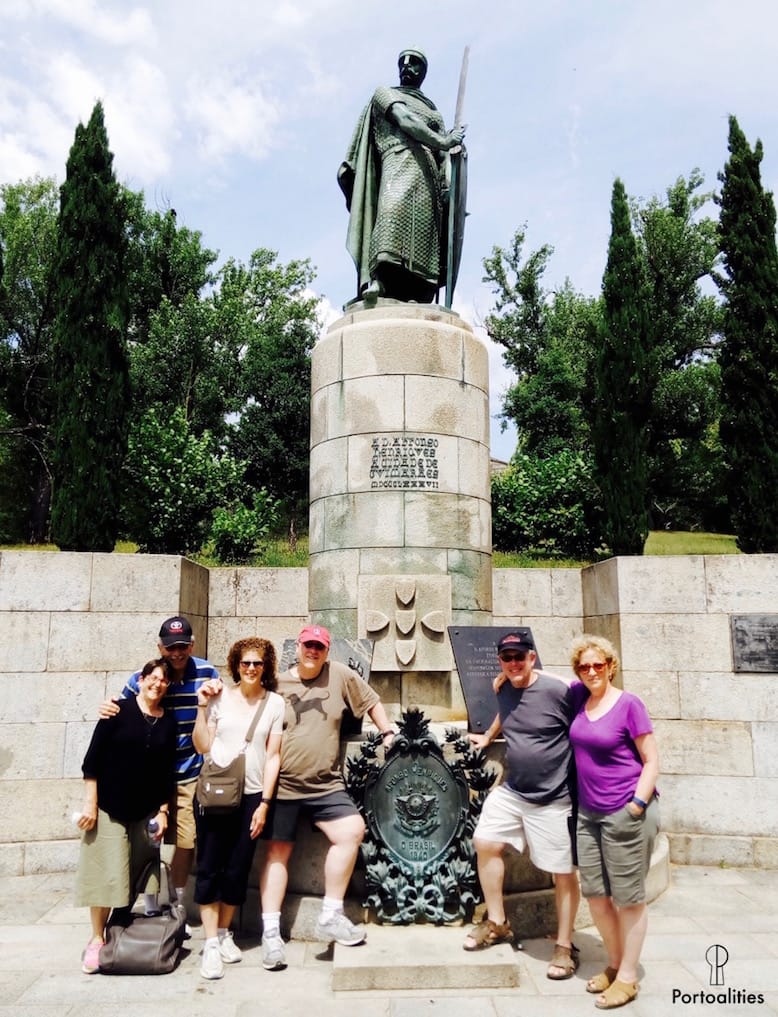
Last week I had the pleasure of guiding a wonderful private tour in Guimarães, with people from USA and Israel, which was the perfect excuse to write this article!
No time for a long article? Here’s a summary
These are the best ways to explore Guimarães:
- Book a small Group tour to Braga & Guimarães. It’s not very expensive and it’s a great way to meet like minded travellers.
- If you prefer to have a more personalised experience, you can book a Private tour to Braga & Guimarães.
- If you’re traveling on a budget, you can always take the train from Porto to Guimarães. You will be limited by train schedules, and there are areas where you simply cannot access without a car (the Bom Jesus Sanctuary, for example).
- If you prefer to be completely independent, you can find cheap rental cars on AutoEurope.
Best things to do in Guimarães:
- Visit the Palace of the Dukes of Bragança
- Check out the beautiful Praça de Tourais and Largo da Oliveira
- Take the cable car to Monte da Penha and do a picnic there
- Eat as many Tortinhas de Guimarães as possible 🙂
The best things to do in Guimarães are:
Palace of the Dukes of Bragança
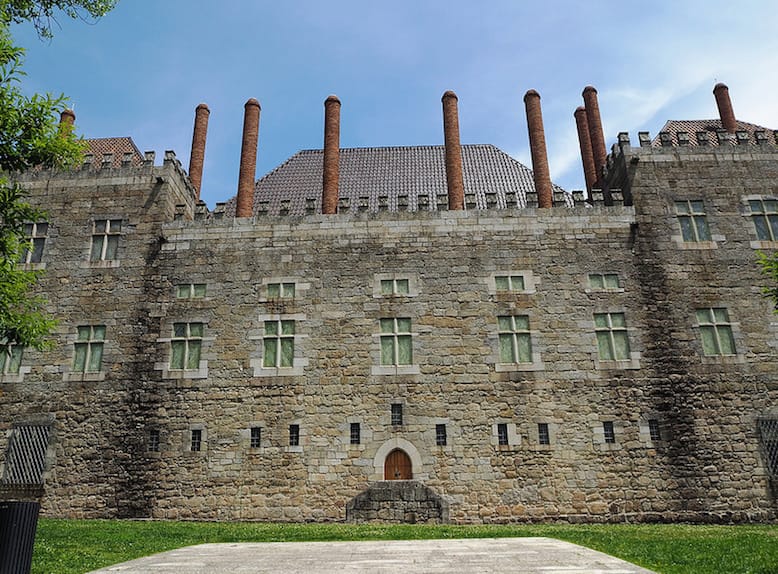
The Palace of the Dukes of Bragança was built in 1420 by Afonso, the future Duke of Braganza, being one of the few medieval palaces left in Portugal. During the sixteenth century it was radically modified by the second Duke of Bragança, which implemented a more symmetrical layout and a functional organization of the floors. Nonetheless, the Palace was soon abandoned and even used as a military building during the Napoleon Invasions.
Fortunately in 1933, António Salazar, the central figure of the Portuguese dictatorship, visited the palace in ruins and ordered its reconstruction. In 1959, after a very controversial renovation of the Palace of the Dukes of Bragança, the building was finally open to the public.
It’s a beautiful monument, although not restored according to its original style (it replicates a royal house of the seventeenth century). You should definitely not miss the chance to visit it!
Price: 5€ (free admission on the 1st Sunday of every month and for children <12 years)
Hours: Open every day from 10h to 18h.
Parking: Free in Campo de S. Mamede.
Castle of Guimarães
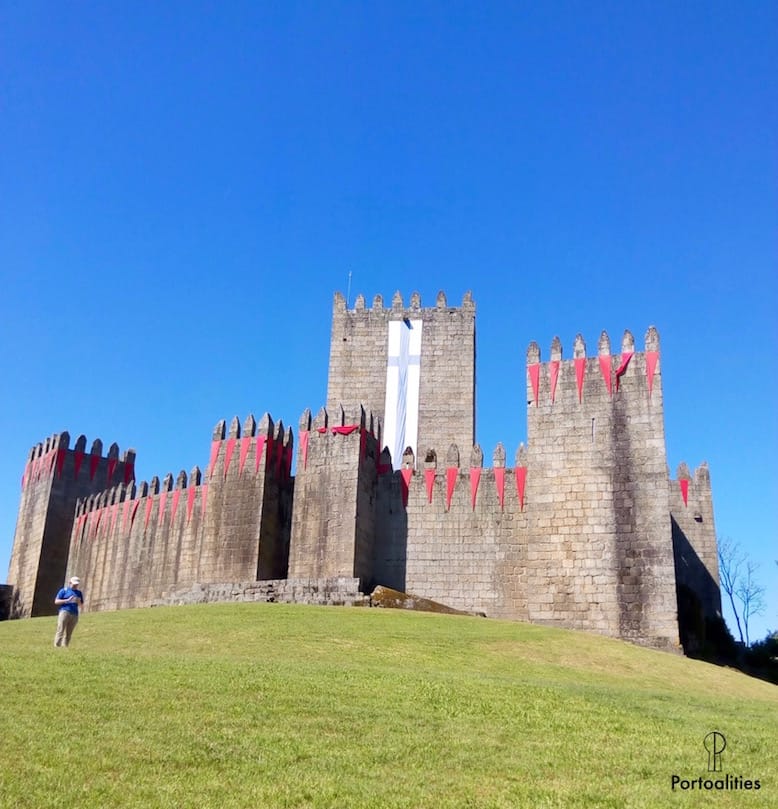
The gorgeous Castle of Guimarães was built by the Countess Mumadona Dias, the most powerful woman in the Northwest of the Iberian Peninsula during the tenth century. Later, Count Henry, the father of the first king of Portugal, Afonso Henriques, extended the castle and it was there that Afonso was born.
The Castle of Guimarães was renovated during the renovation of the Palace of the Dukes of Braganza, but for years it had been vilified. There was even been a petition, during the eighteenth century, to completely demolish the Castle of Guimarães. Can you imagine such a shameful idea, when you stare at this amazing castle?
Price: 2€ (free admission on the 1st Sunday of every month and for children <12 years)
Hours: Open every day from 10h to 18h.
Parking: Free in Campo de S. Mamede.
Church of São Miguel
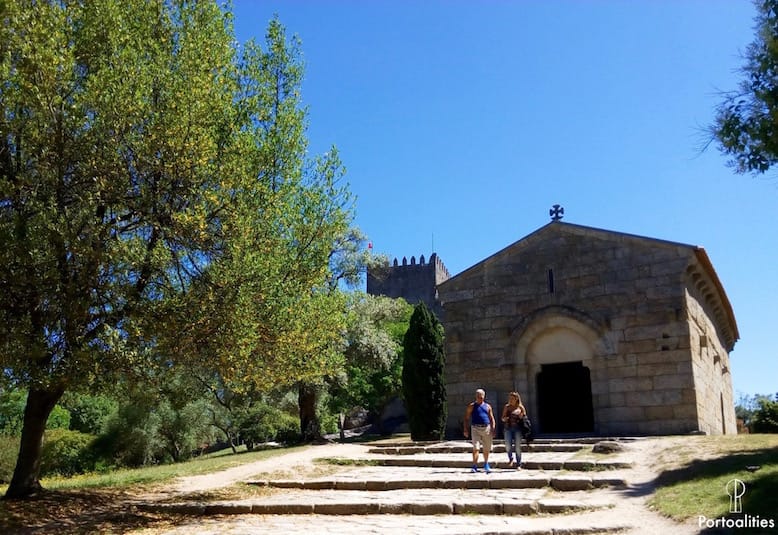
It is universally accepted that King Afonso Henriques was baptized in the Church of São Miguel, which dates its construction somewhere in the ninth or tenth century, during the era of Countess Mumadona Dias.
However, the church was first referenced only in 1216, in a document of the Collegiate of Guimarães (long after the death of King Afonso Henriques), and it was only consecrated by the Archbishop of Braga in 1239.
The virtually non-existent decor, the freshness of the stone and the absolute silence make this little church a must stop for anyone visiting Guimarães 🙂
Price: free of charge.
Hours: Open every day from 10h to 18h.
Parking: Free in Campo de S. Mamede.
Largo da Oliveira
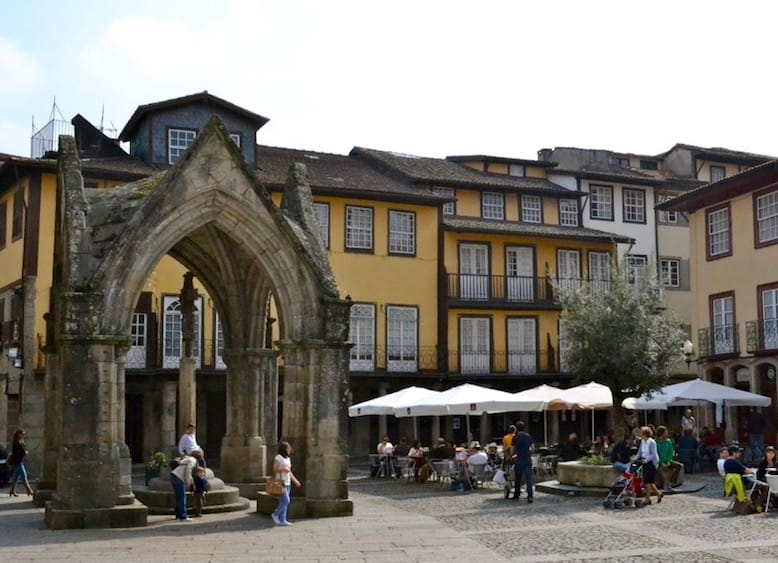
Largo da Oliveira, which translate to Olive Tree Square, owes its name to an ancient olive tree planted in front of the (formerly known as) Church of St. Maria of Guimarães. The legend says that the olive tree, which was completely dry, suddenly flourished in 1342, when a trader from Guimarães named Pero Esteves, placed a Norman cross close to the olive tree.
This was interpreted as a miracle, and since then this square started being called Largo da Oliveira, and the church as Church of Our Lady of Oliveira. The olive tree was removed in 1870 against the popular will, and only in 1985 a new one was planted in the same place.
In the stone base around the tree, you can read the three most important dates of the history of this beautiful tree: 1342, 1870 and 1985.
It was also here that a grotesque ritual against the Jewish community of Guimarães took place, but I save that story for my tours 🙂
Zona de Couros (The tanneries’ zone)
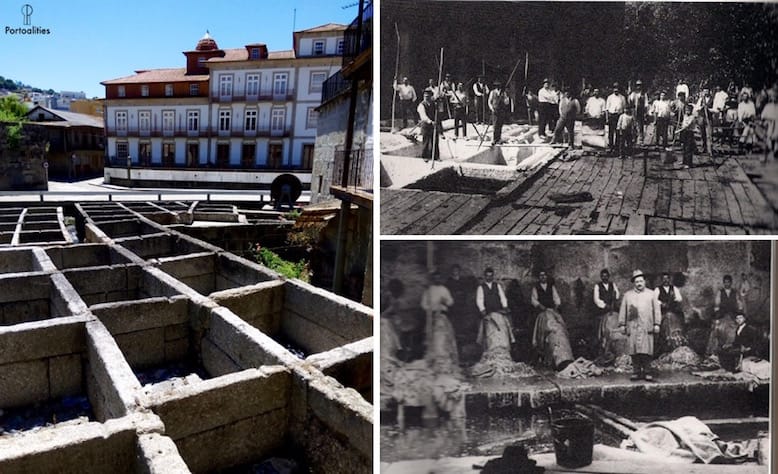
The Tanneries’ zone is a valuable cultural heritage of Guimarães. The medieval art of working leather had been developed in Guimarães since immemorial times, placed outside the city walls because it was a very polluting and malodorous industry.
For centuries, the raw materials were the skins of the cattle of the region. Later came the skins from Brazil, Angola and Mozambique. It was a very profitable business during the nineteenth century due to the wars that ravaged Europe. Therefore, it attracted the investment of countless people of Guimarães, becoming an industry that greatly contributed to the economy of the city and to the development of other vertical industries such as footwear.
In poor working conditions, men cleaned the skins on the granite structures that you can see in the photo on the left, granitic memories of a medieval industry that lasted almost to the present day.
Take the cable car to Monte da Penha
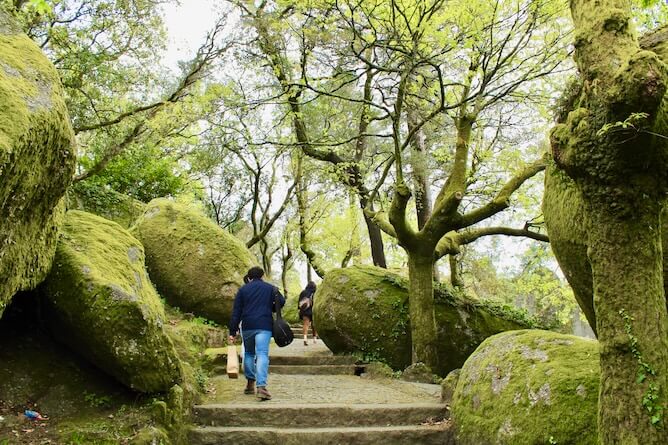
Monte da Penha is a scenic hill located just outside the historic center of Guimarães, offering breathtaking views of the surrounding region. It’s a popular spot for both locals and visitors seeking nature, tranquility, and fresh air. A great way to reach the top is by taking the Penha cable car, which provides a fun and picturesque ride through the forested landscape. Once there, you’ll find plenty of green spaces perfect for a relaxing picnic, along with walking trails, viewpoints, and even a small sanctuary to explore.
What is the best way to explore Guimarães?
The answer depends on your budget, your traveling style and your expectations:
- Book a small Group tour to Braga & Guimarães. It’s not very expensive and it’s a great way to meet like minded travellers.
- If you prefer to have a more personalised experience, you can book a Private tour to Braga & Guimarães.
- If you’re traveling on a budget, you can always take the train from Porto to Guimarães. You will be limited by train schedules, and there are areas where you simply cannot access without a car (the Bom Jesus Sanctuary, for example).
- If you prefer to be completely independent, you can find cheap rental cars on AutoEurope.
Where to Stay in Guimarães

If you’re wondering where to stay in Guimarães, Casa do Juncal is the answer. I already told you about this unpretentious boutique hotel on my Top 5 Romantic Hotels in the North of Portugal.
Casa do Juncal is located at the centre of Guimarães, on a renovated building with few rooms, so you’ll immediately feel at home. There, you can expect a wonderful breakfast prepared exactly according to your request (I prefer this model much more than a buffet where food is exposed for god-knows-how-long!). There is also an honesty bar, where guest write down their room and what they drunk. And, moreover, a beautiful garden on the back.
Other excellent options to stay in Guimarães are:
- Hotels with a swimming pool: Pousada Mosteiro de Guimarães and Casa de Sezim.
- Apartments: Old Market Apartment and Apartamentos com História.
Where to Eat in Guimarães

Guimarães offers some excellent dining options, especially if you’re in the mood for traditional Portuguese flavors. If you have a car, S. Gião is a fantastic choice just outside the city. This spacious restaurant is perfect for families or groups of friends. Their smoked sausages from Northern Portugal are a highlight, and the house-made smoked salmon with capers is truly outstanding. For the main course, try the fish soup with seaweed—it’s rich, balanced, and deeply satisfying. And if you have a sweet tooth, don’t miss their unforgettable canillha for dessert.
If you’d rather stay in the city center, two excellent spots are Solar do Arco and Histórico by Papaboa. Solar do Arco is a cozy, traditional restaurant known for its hearty regional dishes like bacalhau à Minhota and roasted goat. Histórico by Papaboa blends rustic charm with bold flavors, offering classic northern Portuguese cuisine in a beautifully restored stone building right in the heart of Guimarães.
Save this article for later:

